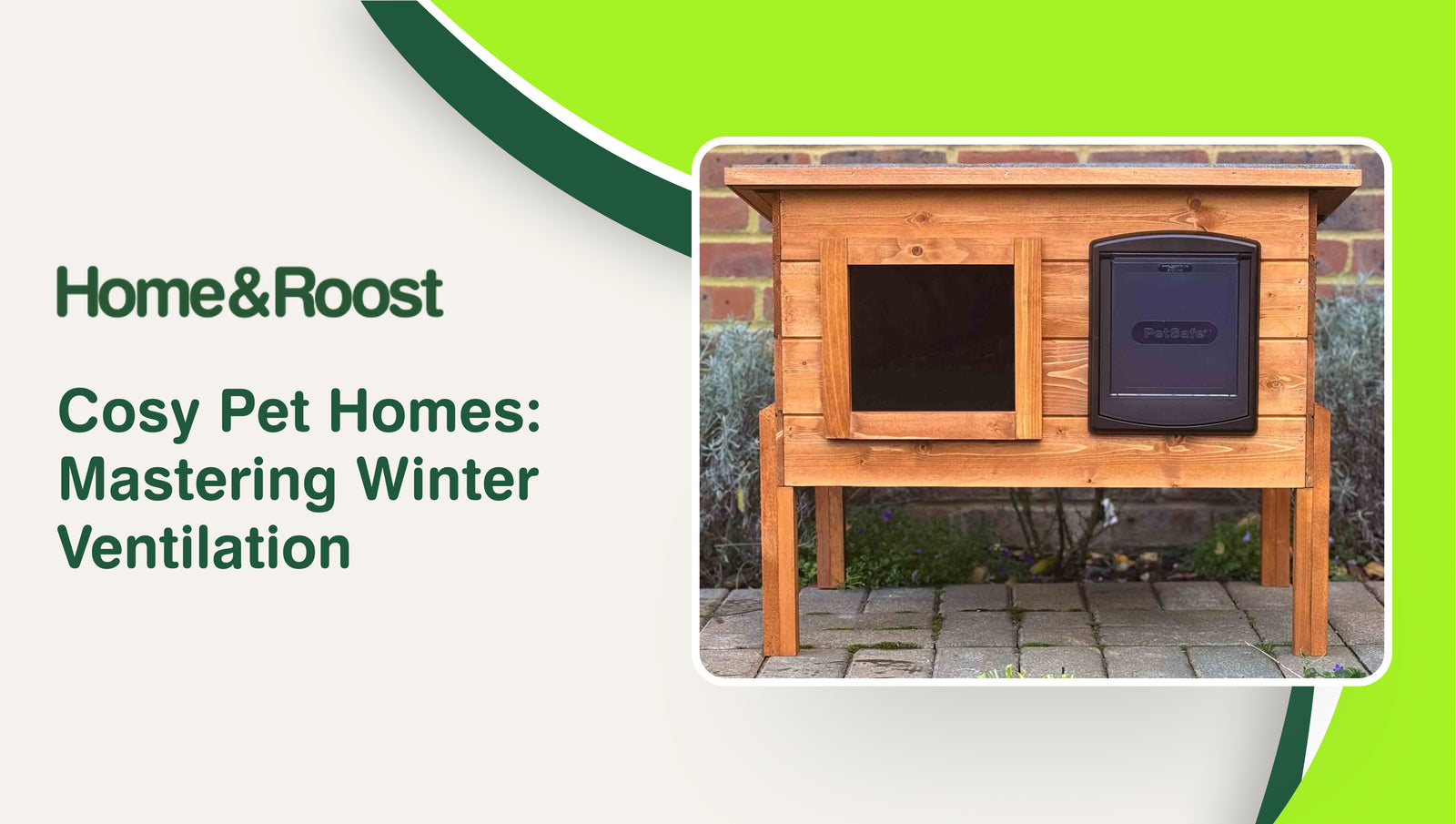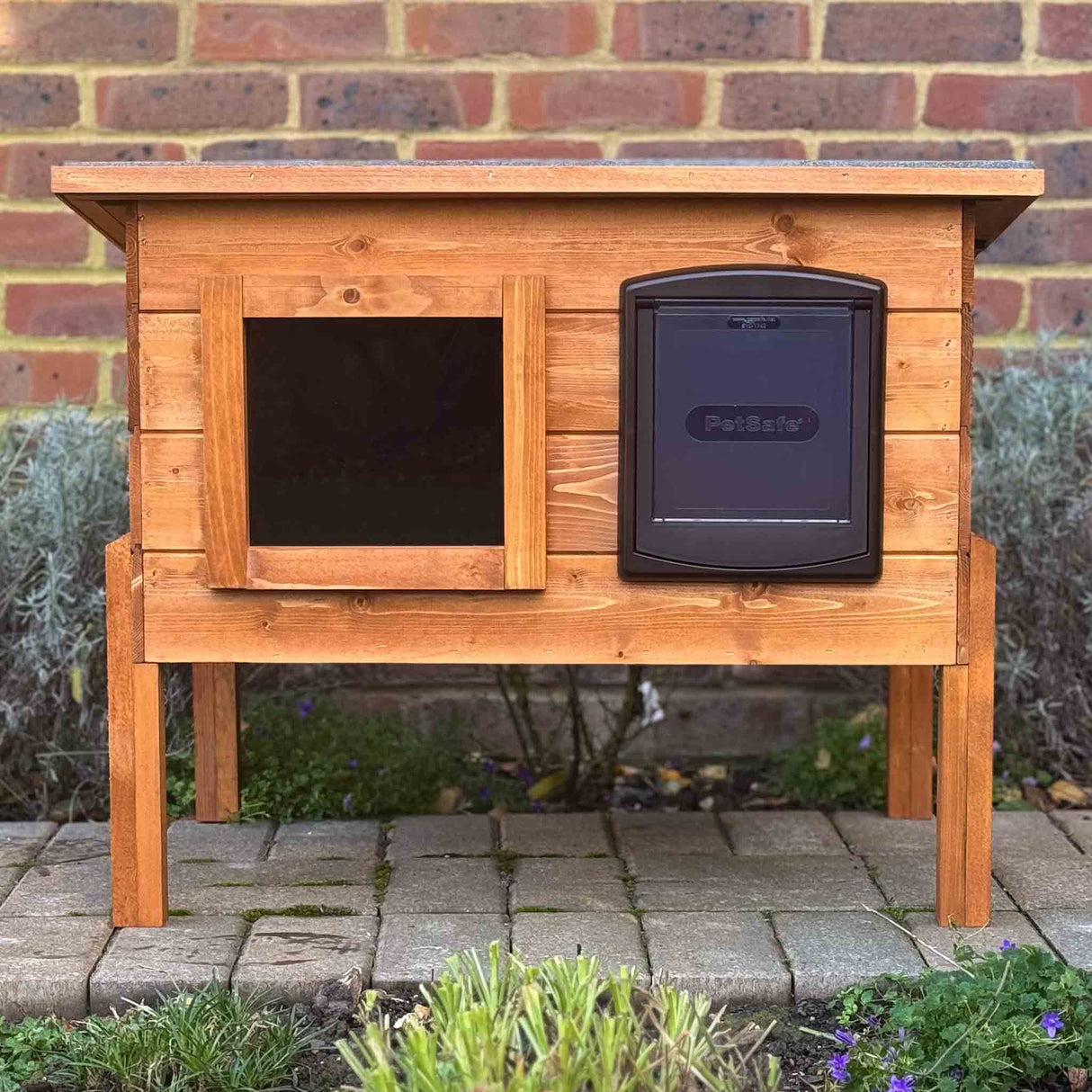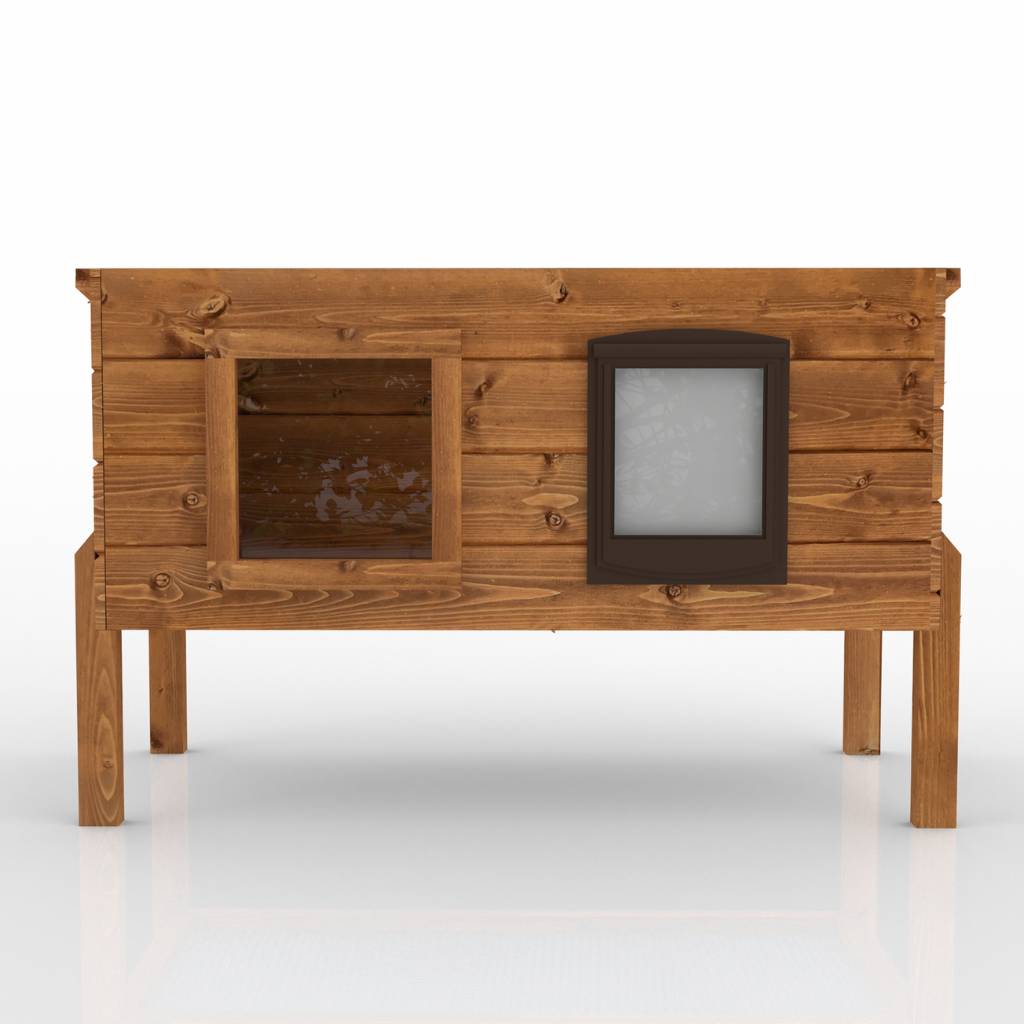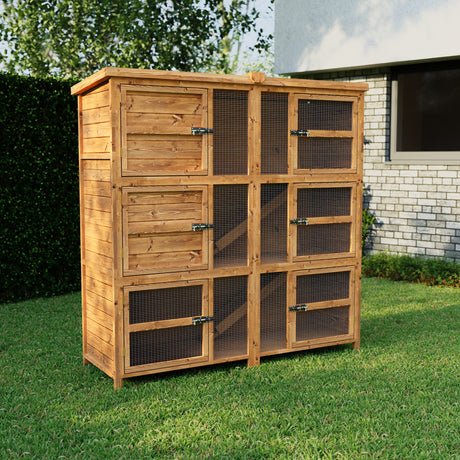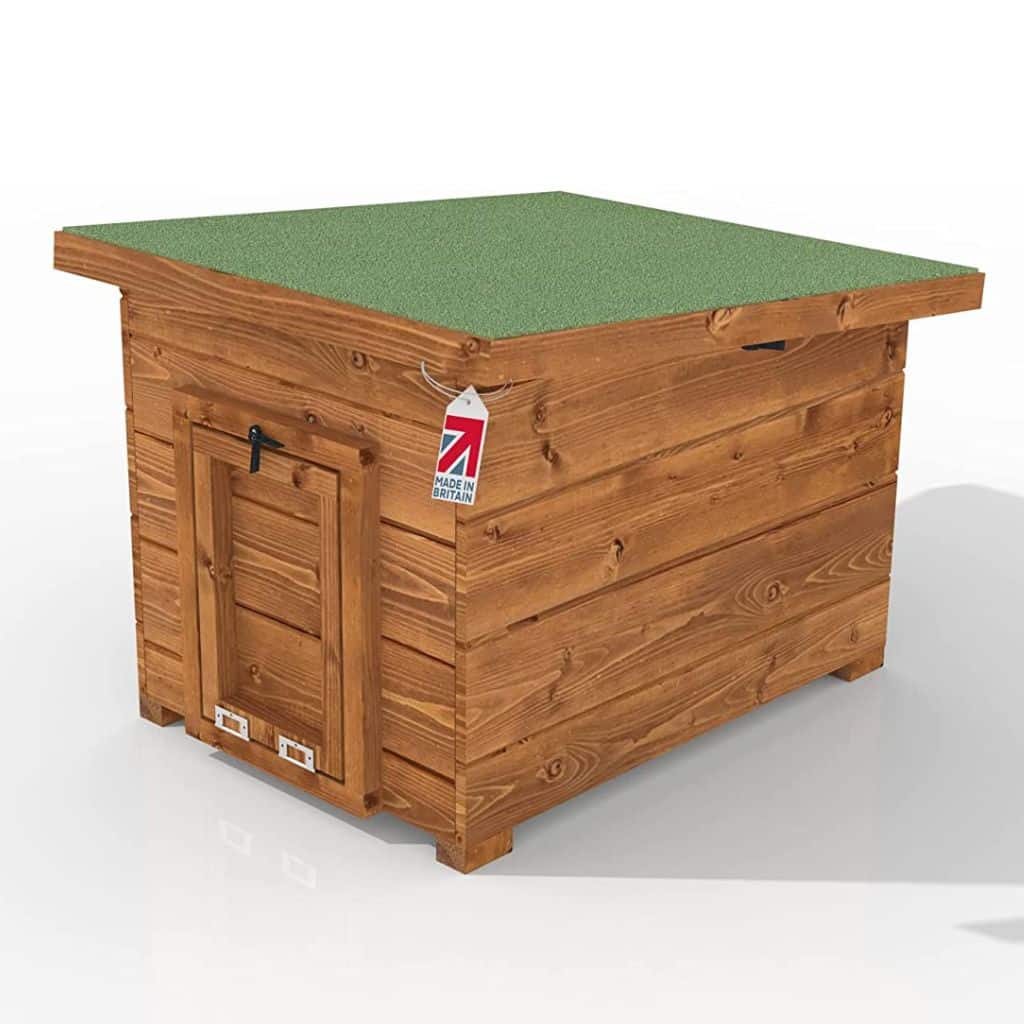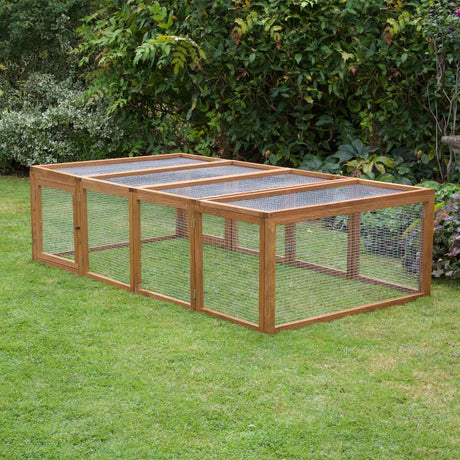As winter approaches, keeping our pets warm and comfy becomes important. But it's not just about blankets - proper ventilation is key to a healthy pet home. Let's explore how to balance warmth and fresh air in your pet's winter home, ensuring they stay cosy without compromising air quality. Good ventilation can really help your pet feel better during cold months.
Winter-Proofing Pet Housing Ventilation
- Balance warmth and fresh air for pet health
- Clean vents and fans regularly to maintain airflow
- Check and replace worn weather strips
- Adjust ventilation based on changing weather
- Ensure proper insulation for warmth and air circulation
- Perform regular maintenance on ventilation systems
Why Ventilation Matters in Winter
You might think sealing up your pet's house is best to keep them warm, but that's not quite right. Good airflow is important all year, even when it's cold outside. It helps get rid of damp air, bad smells, and harmful gases that can build up. It also keeps the temperature just right, so your pet doesn't get too hot or cold. Proper ventilation stops mold and mildew from growing, which can be bad in small spaces during winter. By keeping fresh air flowing, you're not only controlling temperature but also making a healthier place for your pet to live in during cold months.
Take our Cat House XL Self Heating Kennel, for example. It has a clever one-way privacy window that lets fresh air in while keeping your cat cosy. This smart design shows how we can keep pets warm without making their homes stuffy. The privacy window allows for ventilation and gives your cat a sense of security, making them less stressed during winter. The self-heating feature works with the ventilation system to keep the right temperature, showing how modern pet houses can balance warmth and air quality well.
Choosing the Right Winter-Ready Pet Home
When you're picking out a winter home for your pet, look for these important features:
- Insulated walls: Our Cat House Self Heating Kennel uses special AIRTECH® 1500 tech to keep the heat in. This advanced insulation keeps warmth in and helps control the inside temperature, stopping it from getting too hot even on warmer winter days.
- Raised floor: This stops the cold from coming up from the ground. A raised floor also helps keep moisture away, which is important for keeping your pet's home dry and comfy.
- Adjustable vents: Being able to open or close air holes helps control the airflow. This lets you adjust the ventilation based on the weather, making sure your pet always has the right mix of fresh air and warmth.
These features work together to create a cosy spot that's also healthy for your pet to breathe in. When choosing a winter-ready pet home, think about what your pet's breed and size need. Some pets might need extra things like built-in heating pads or thicker insulation, depending on how well they handle cold.
Natural Ways to Keep Air Moving
You don't always need fancy gadgets to keep the air fresh in your pet's home. Here are some simple tricks:
1. Smart placement: Put your pet's house where it can catch a bit of natural breeze. Think about which way the wind usually blows in your area and put the pet house so it gets some natural air without being hit by strong winds.
2. Use windows and vents: Like the privacy window in our XL Cat House, these let air flow without making it too draughty. Windows and vents in the right places can create a gentle breeze, making air move better without losing warmth.
3. Create a 'chimney effect': If you can, have air come in low and go out high - it's like giving your pet's house its own natural air con! This uses the fact that warm air rises naturally, creating a steady flow of fresh air through the pet house.
Keeping the Balance: Warm but Not Stuffy
Getting the mix just right between toasty and fresh air is super important. Here's how to do it:
- Watch the temp: Aim for a steady temperature that's right for your pet - not too hot, not too cold. Use a thermometer to check the temperature inside the pet house often, changing the ventilation as needed to keep it just right for your pet.
- Check the dampness: You want the air to be just a bit moist, not wet or super dry. A hygrometer can help you measure humidity levels, making sure the environment stays comfy and doesn't cause breathing problems.
- Look at your pet: If they're all huddled up or panting lots, something's not quite right with the air or heat. Watch how your pet behaves as they're the best way to tell if they're comfortable. Change the ventilation and warmth based on what you see.
Our pet house covers can help with this balance. They keep the warmth in but are breathable too, so the air stays fresh. These covers work as an extra layer of insulation while letting moisture escape, stopping water from building up inside the pet house.
Stopping Draughts for Extra Cosiness
Cold air sneaking in can make your pet's home chilly. Here's how to stop it:
1. Weather strips: Put these around doors and windows to seal up gaps. Choose good quality, long-lasting weather strips that can handle being used a lot and different temperatures.
2. Thermal curtains: Our Cat House has a special thermal curtain option to keep the warmth in. These curtains act as an extra barrier against cold air while still letting your pet move in and out easily.
3. Draught stoppers: Put these at the bottom of doors to block cold air. You can buy special draught excluders or even make your own using old fabric filled with sand or rice to save money.
These simple fixes can make a big difference in keeping your pet's home snug without making it stuffy. Remember to check and fix these draught-proofing measures regularly to make sure they work well all winter.
Different Pets, Different Needs
Not all pets like the same kind of air in their homes. Let's look at what some common pets need:
1. Rabbits and Guinea Pigs: They like fresh air but get cold easily. Our hutches have good airflow but protect from chilly winds. For these small animals, it's important to provide a place without draughts while making sure air keeps moving to prevent breathing problems.
2. Cats: They love warm spots but also need clean air. That's why our cat houses have both insulation and ventilation. Cats are very sensitive to air quality, so a balance between warmth and fresh air is really important for them to be comfortable and healthy.
3. Hedgehogs: These little guys need air that moves but without any cold draughts. Hedgehogs can easily get breathing infections, so their homes need careful ventilation that provides fresh air without creating cold spots or direct air currents.
Keeping Things Running Smoothly
To make sure your pet's winter home stays comfy all season, do these simple checks:
- Clean vents and fans: Dust them off regularly to keep air flowing. Dust and dirt can really slow down your ventilation system. Use a soft brush or vacuum cleaner with a brush attachment to gently clean vents and fans at least once a week.
- Check for gaps: Look at weather strips and replace them if they're worn out. Over time, weather strips can break down, especially if they're used a lot. Check them every month and replace any that look worn to keep draughts out effectively.
- Adjust as needed: Change things up if the weather gets extra cold or warm. Be ready to change ventilation based on weather forecasts. During very cold times, you might need to reduce ventilation a bit, while warmer days might need more airflow.
Wrapping Up: Happy Pets in Winter
By following these tips, you can create a winter home for your pet that's both warm and full of fresh air. Remember, good ventilation isn't just about comfort - it's really important for keeping your furry friend healthy too. At Home & Roost, we make products that help with this, no matter what the weather's like outside. Our pet houses are made to keep pets warm and give them fresh air all through winter.
Whether you've got a cat, rabbit, guinea pig, or hedgehog, there's a way to keep them cosy and breathing easy all winter long. With a bit of care and the right setup, your pet will be happy and healthy until spring comes around again! Regularly checking and fixing your pet's winter home will really help keep them well during the cold months. If you're worried about your pet's winter housing needs, ask a vet. They can give you advice that's just right for your pet's breed, age, and health.
